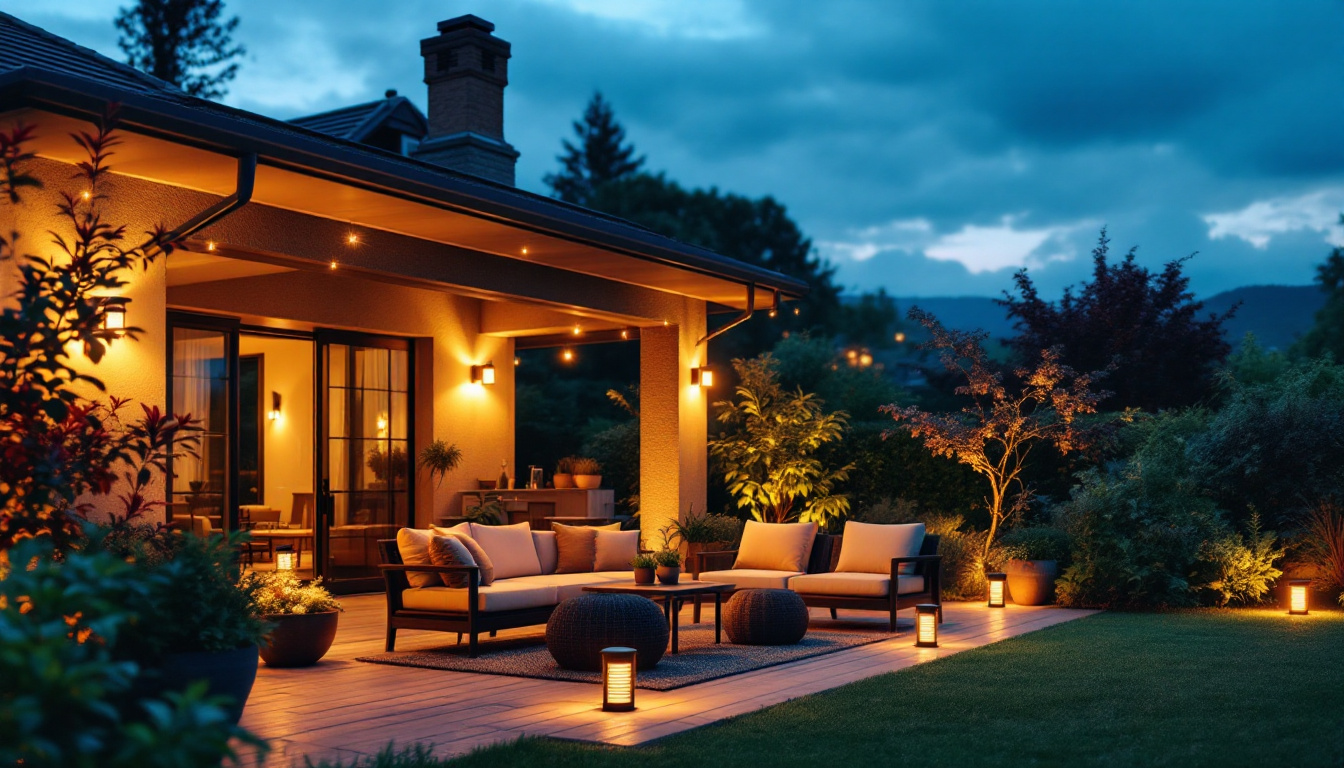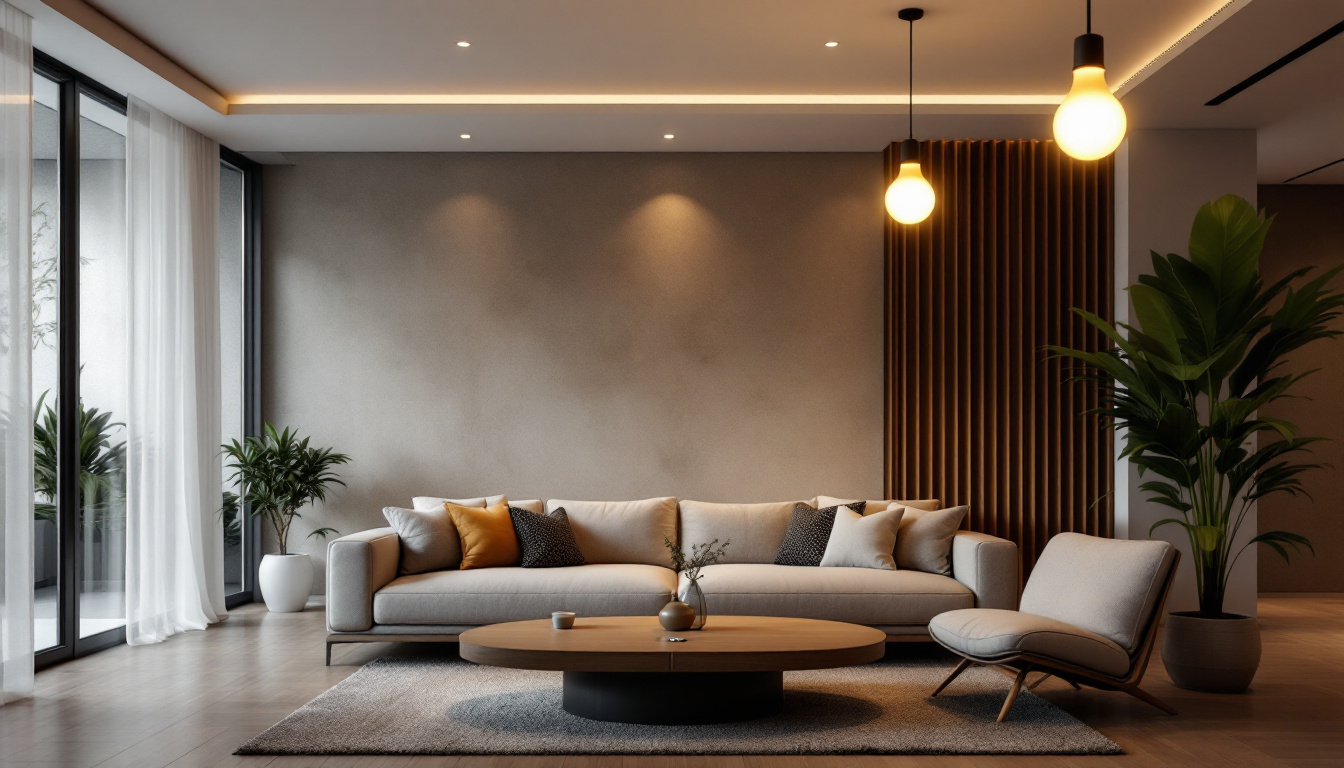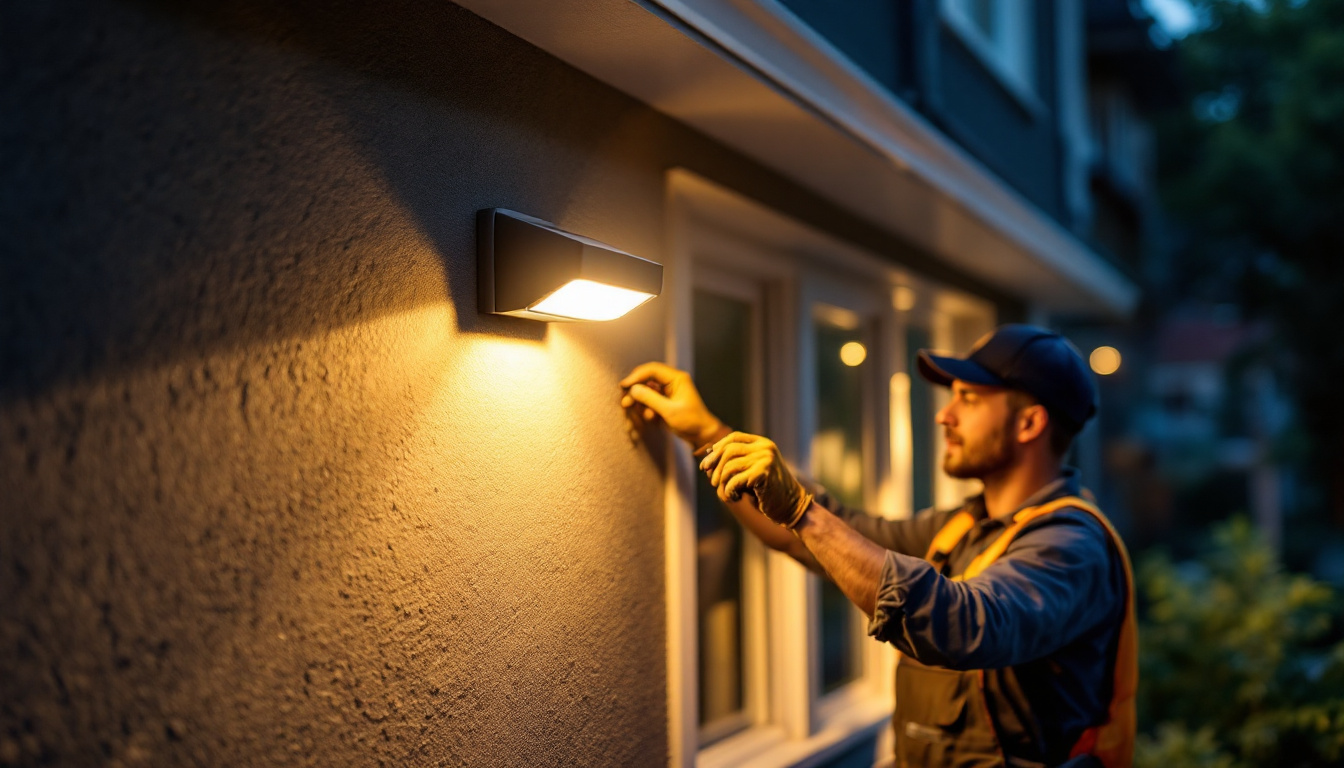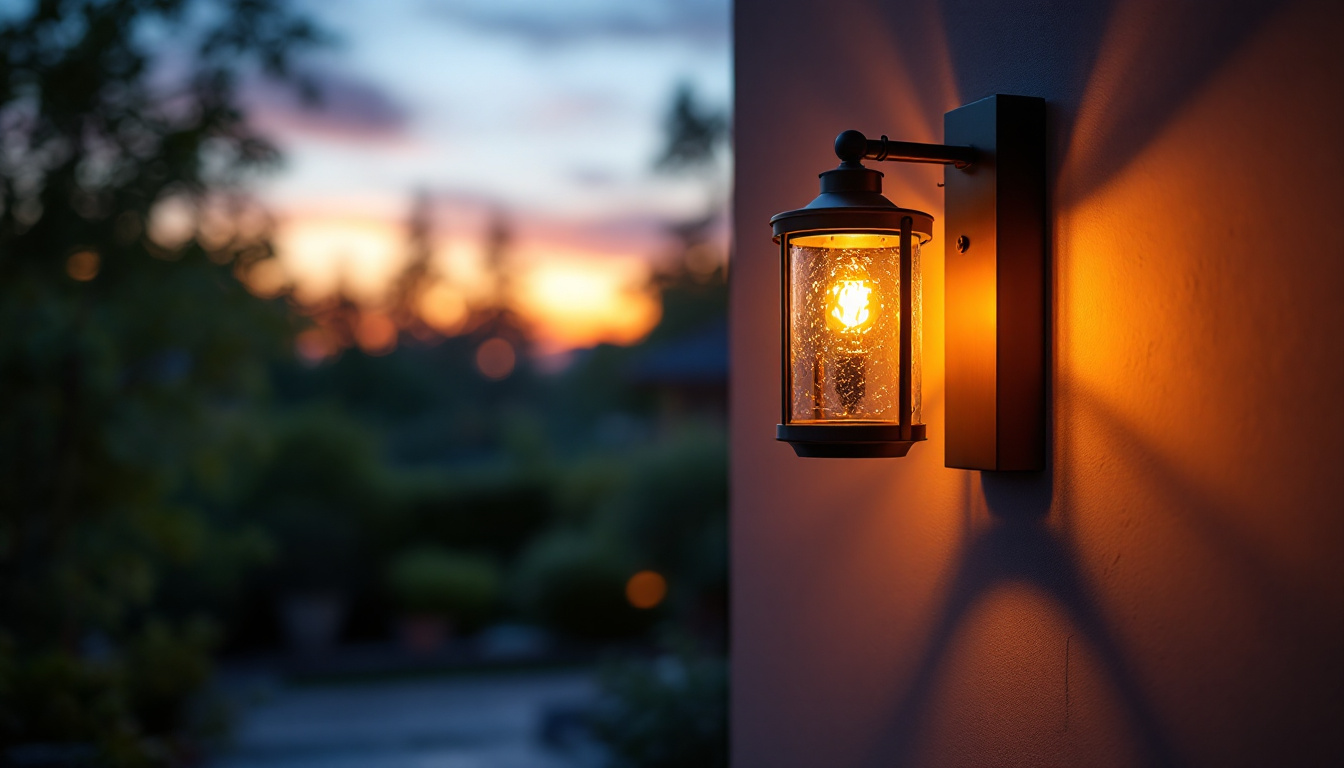
As the demand for sustainable and energy-efficient solutions continues to rise, outdoor solar lighting has become a popular choice for patios. lighting contractors play a crucial role in guiding homeowners through the selection and installation process. This checklist serves as a comprehensive guide to ensure that lighting contractors can deliver optimal solar lighting solutions for patios.
Before diving into the specifics of installation and selection, it is essential for contractors to have a solid understanding of how solar lighting works. Solar lights harness energy from the sun, converting it into electricity through photovoltaic cells. This energy is stored in batteries and used to power the lights during nighttime. The efficiency of this process can vary based on factors such as sunlight exposure, the angle of the solar panel, and the quality of the components used in the system.
Familiarity with the components of solar lighting systems is vital. Key elements include solar panels, batteries, LED bulbs, and sensors. Each component plays a significant role in the overall performance and efficiency of the lighting system. For example, the type of battery used can affect how long the lights operate after sunset, while the quality of the LED bulbs can determine the brightness and color temperature of the light emitted. Understanding these nuances can help contractors make informed decisions when selecting products for their projects.
There are various types of solar lighting available, each suited for different applications. Path lights, flood lights, string lights, and wall-mounted fixtures are just a few examples. Understanding the specific needs of a patio space will help contractors recommend the most appropriate type of lighting. Path lights, for instance, are typically low to the ground and can be strategically placed to guide guests safely along walkways, while also adding a decorative touch to the landscape.
For instance, path lights can illuminate walkways, enhancing safety and aesthetics, while wall-mounted fixtures can add ambiance to seating areas. Flood lights are ideal for larger spaces, providing ample illumination for gatherings or outdoor activities. Additionally, solar string lights can create a whimsical atmosphere, perfect for festive occasions or casual get-togethers. By combining various types of solar lighting, contractors can design a cohesive lighting scheme that meets both functional and aesthetic needs.
Solar lighting offers numerous advantages that appeal to both contractors and homeowners. One of the most significant benefits is energy efficiency. Since solar lights rely on renewable energy, they reduce electricity costs and carbon footprints. This is particularly appealing in today’s environmentally conscious market, where consumers are increasingly looking for sustainable solutions for their homes and outdoor spaces.
Additionally, solar lighting systems are often easy to install, requiring no extensive wiring or electrical work. This not only saves time but also reduces installation costs. Furthermore, advancements in solar technology have led to improved brightness and longer battery life, making them a viable option for various outdoor settings. Many modern solar lights now come equipped with motion sensors and timers, allowing for enhanced security and convenience. By automatically turning on when movement is detected or at dusk, these lights provide peace of mind while also conserving energy when not in use. This combination of functionality and sustainability makes solar lighting an attractive choice for any outdoor project.
Before selecting solar lighting fixtures, it is essential to assess the patio space thoroughly. Factors such as size, layout, and existing structures should be considered to ensure optimal lighting placement.
The size of the patio will dictate the number and type of solar lights needed. Larger patios may require multiple fixtures to achieve adequate illumination, while smaller spaces might only need a few strategically placed lights. Understanding the layout, including pathways, seating areas, and landscaping, will help in determining the best lighting solutions.
Contractors should also consider the height and placement of fixtures. For instance, path lights should be installed at a height that provides adequate illumination without being obtrusive. Wall-mounted fixtures should be positioned to cast light downward, creating a warm and inviting atmosphere.
Existing structures, such as trees, fences, or buildings, can impact solar lighting effectiveness. Contractors should assess how these elements may block sunlight from reaching solar panels. If certain areas receive limited sunlight, alternative lighting solutions may need to be considered.
Moreover, the aesthetic appeal of the patio can be enhanced by strategically placing lights around existing structures. For example, highlighting a beautiful tree or a decorative wall can create a stunning focal point while providing necessary illumination.
Once the patio space has been assessed, the next step is selecting the appropriate solar lights. This process involves considering various factors, including brightness, design, and features.
Brightness is a critical factor when selecting solar lights. The brightness of solar fixtures is measured in lumens, and the required lumens will vary based on the intended use of the lighting. For instance, pathway lights typically require around 50-100 lumens, while flood lights may need 700 lumens or more for larger areas.
Contractors should also consider the color temperature of the lights. Warmer temperatures (around 2700K-3000K) create a cozy atmosphere, while cooler temperatures (4000K and above) provide a more modern and vibrant look. Matching the color temperature to the desired ambiance of the patio is essential for achieving the right atmosphere.
The design of solar lights should complement the overall aesthetic of the patio. Options range from sleek and modern fixtures to more traditional styles. Contractors should encourage homeowners to choose designs that align with their personal style and the existing decor of their outdoor space.
Moreover, the materials used in solar lights can affect durability and maintenance. Stainless steel and weather-resistant plastics are popular choices for outdoor fixtures, as they withstand the elements while maintaining their appearance over time.
Proper installation is crucial for the performance and longevity of solar lighting systems. Lighting contractors must be well-versed in installation techniques to ensure that the lights function optimally.
When installing solar lights, placement is key. Fixtures should be positioned to maximize sunlight exposure during the day. South-facing areas typically receive the most sunlight, making them ideal locations for solar panels.
Contractors should also consider the angle of the solar panels. Adjusting the angle can enhance sunlight absorption, especially during different seasons. Additionally, ensuring that the lights are not obstructed by foliage or other structures will help maintain their efficiency.
After installation, testing the solar lights is essential. This involves checking the brightness levels and ensuring that the lights operate as intended during the night. If certain areas are under-illuminated, adjustments can be made by repositioning fixtures or adding additional lights.
Regular maintenance checks should also be scheduled to ensure that solar panels remain clean and free from debris. A clean solar panel will absorb sunlight more effectively, prolonging the life of the lighting system.
Even though solar lights are generally low-maintenance, occasional upkeep is necessary to ensure their longevity and performance. Lighting contractors should educate homeowners on basic maintenance practices.
Dust, dirt, and debris can accumulate on solar panels, reducing their efficiency. Homeowners should be advised to clean the panels regularly, especially after storms or high winds. A simple wipe with a damp cloth can help maintain optimal performance.
In addition to the panels, the fixtures themselves should be checked for any signs of wear or damage. Replacing bulbs or repairing fixtures promptly can prevent further issues down the line.
Contractors should be prepared to address common issues that may arise with solar lighting systems. If lights are not functioning as expected, the first step is to check the batteries. Over time, batteries may lose their ability to hold a charge and may need replacement.
Additionally, if lights are dim or flickering, it could be due to insufficient sunlight exposure or dirty solar panels. Educating homeowners about these common troubleshooting steps can empower them to maintain their solar lighting effectively.
To create a truly inviting patio atmosphere, contractors can suggest additional features and enhancements that complement solar lighting systems.
Integrating smart technology with solar lighting can elevate the user experience. Smart solar lights can be controlled via smartphone apps, allowing homeowners to adjust brightness levels, set timers, and even change color temperatures remotely.
Moreover, motion sensors can enhance security and convenience by automatically turning on lights when movement is detected. This feature is particularly beneficial for pathways and entryways, ensuring safety during nighttime hours.
Landscaping plays a vital role in the overall aesthetic of a patio. Contractors can recommend incorporating plants and features that complement the solar lighting. For instance, strategically placed shrubs or flower beds can enhance the beauty of the lighting while providing additional shade for solar panels during the day.
Water features, such as fountains or ponds, can also be illuminated with solar lights, creating a serene and tranquil atmosphere. This not only enhances the visual appeal but also adds a soothing sound element to the outdoor space.
Outdoor solar lighting for patios presents a unique opportunity for lighting contractors to offer sustainable and aesthetically pleasing solutions. By following this checklist, contractors can ensure that they provide homeowners with the best possible solar lighting experience.
From understanding the basics of solar lighting to selecting the right fixtures and ensuring proper installation, each step is crucial in delivering a successful project. By prioritizing maintenance and troubleshooting, contractors can empower homeowners to enjoy their solar lighting systems for years to come.
Incorporating smart technology and complementary landscaping can further enhance the outdoor experience, making patios not just functional spaces but also inviting retreats. As solar lighting continues to evolve, staying informed about the latest trends and technologies will enable contractors to remain competitive in the ever-changing landscape of outdoor lighting.
Ready to elevate your patio projects with sustainable and efficient solar lighting? At LumenWholesale, we provide lighting contractors with the highest quality, spec-grade lighting products at unbeatable wholesale prices. Say goodbye to local distributor markups and hello to superior lighting that meets the highest industry standards. With our hassle-free bulk buying and free shipping, you can trust that you’re getting premium lighting at the best value — without any hidden fees. Enhance your outdoor lighting projects by choosing LumenWholesale, where quality, affordability, and convenience come together. Discover our extensive selection and start saving today by visiting Wholesale Lighting at the Best Value.

Discover how to future-proof your lighting projects with 40 Watt Type B bulbs.

Discover the frequent pitfalls lighting contractors encounter in light conversion projects.

Discover how motion detecting lights can revolutionize your lighting business by enhancing security, reducing energy costs, and attracting eco-conscious clients.

Discover expert insights from top lighting contractors on choosing and installing outdoor wall mounted lamps.